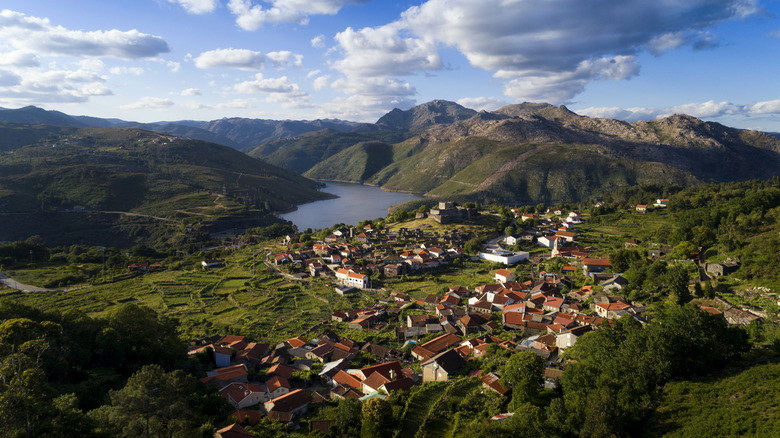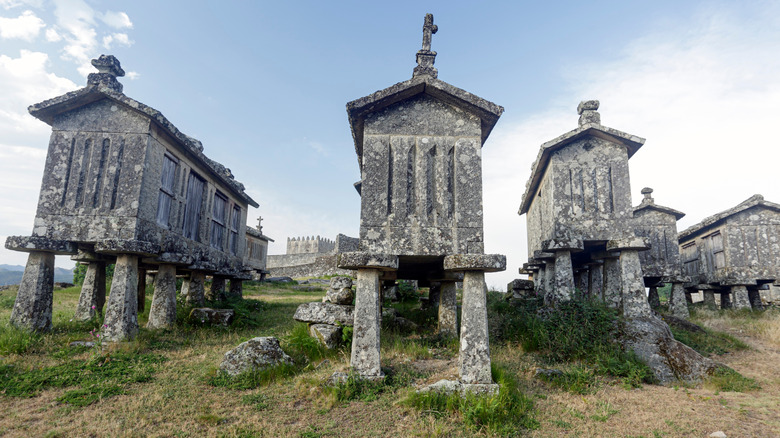This Quiet Portuguese Village Is A History-Rich Escape Filled With An Ancient Castle And Timeless Traditions
Perched on a green hill and surrounded by the rural homes of the locals is Lindoso. This small, historic settlement in the north of Portugal faces the Lima River and the adjacent valley, close to the Spanish border. The village is part of the Ponte de Barca township, tucked away in the quaint, mountainous region of Peneda-Gerês National Park. Lindoso — which means "beautiful" in Portuguese — is magnificently preserved, and tourists can meander through its cobblestone labyrinthine streets to uncover its past filled with timeless traditions steeped in an age-old agricultural system. Due to its strategic geographical position, the town was meant to defend the area from external attacks, building a fortress in the 13th century that would become an ancient landmark.
If you find yourself in the country, Braga — one of Portugal's oldest cities, which is an up-and-coming area for an uncrowded European getaway — is your perfect starting point. Although using public transportation to get to Lindoso can be challenging, driving to the village from Braga takes about an hour. For those coming from abroad, the Francisco Sá Carneiro Airport (or Porto Airport) is the closest alternative, located an hour and a half's drive away. Seize the day during your stay in the village and venture toward the coast to visit an underrated beach city, where local wine, regional cuisine, and even surfing will enrich your holiday.
The Castle of Lindoso and its espigueiros
Lindoso Castle is a medieval fortress that has stood the test of time since its construction ordered by King Alfonso III during the 13th century. The fortification, with its starlike plan and semi-circular cupolas, offered an efficient, tactical advantage during the 1640 war between Portugal and Spain. The building underwent several military revisions until its last days as a stronghold in the late 19th century; it became a National Monument in 1910. Lindoso Castle's doors are open to the public and free of charge, apart from a museum that can be visited by paying a small ticket fee of €1.50 (at the time of writing). Walk up to its ramparts to get a scenic view and a postcard-perfect picture of the landscape.
Positioned around the castle are the famous Espigueros of Lindoso, over 50 stone-built depositories that kept grains safe from the humidity and hungry rats. The ancient storehouses were built above pillars and feature lateral gaps to allow air flow. A stone cross atop them served to drive malevolent entities and thieves away, often leading people to think they're tombs.
Wilderness exploration near Lindoso's Peneda-Gerês National Park
Portugal is unquestionably one of Europe's best countries for otherworldly, vibrant spring hikes, and Peneda-Gerês National Park is a nature-filled, guaranteed adventure. Portugal's only national park, established in 1971, is a lush corner of this beloved country characterized by impressive waterfalls and a variety of native flora — like the rare Gerês lily and Gerês fern — and fauna across 270 square miles of unspoiled, raw nature. And how you want to make the most of your Southern European vacation, the choice is yours.
The park offers staggering views as you make your way through wild woodlands and towering trees. It'll be almost impossible to keep your attention on the path as dark green pine-dotted hills, cut by a snaking blue river, draw your attention. Animal lovers will be amazed by the wildlife living in the forest, and if you're lucky, you may spot wolves, otters, almost 150 species of birds, as well as 15 different types of bats. Who would have thought? Surprises don't end here, though; keep an eye out for the wild ponies. A rare endemic species named the Garrano, this breed has been roaming the park since the Celts set foot during the first millennium B.C.
For those seeking a rush, discover the reserve on a quad bike tour along the vast greenery, or hop on an e-bike along an ancient Roman road to enjoy some downtime. While enjoying the bucolic beauty of the nature reserve, you'll notice that history is all around. Traces of the past resurface through third-century megalithic dolmens dispersed across the mountains, symbolizing the cradle of early civilization.


